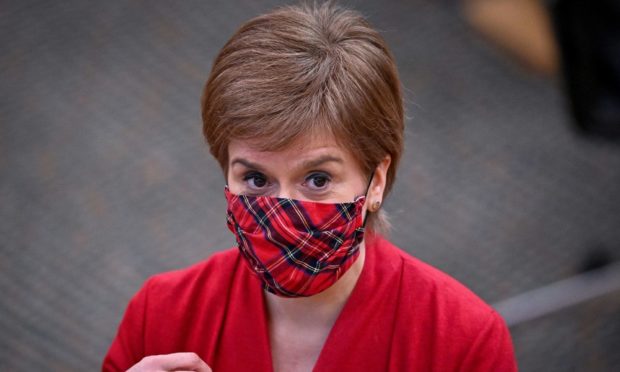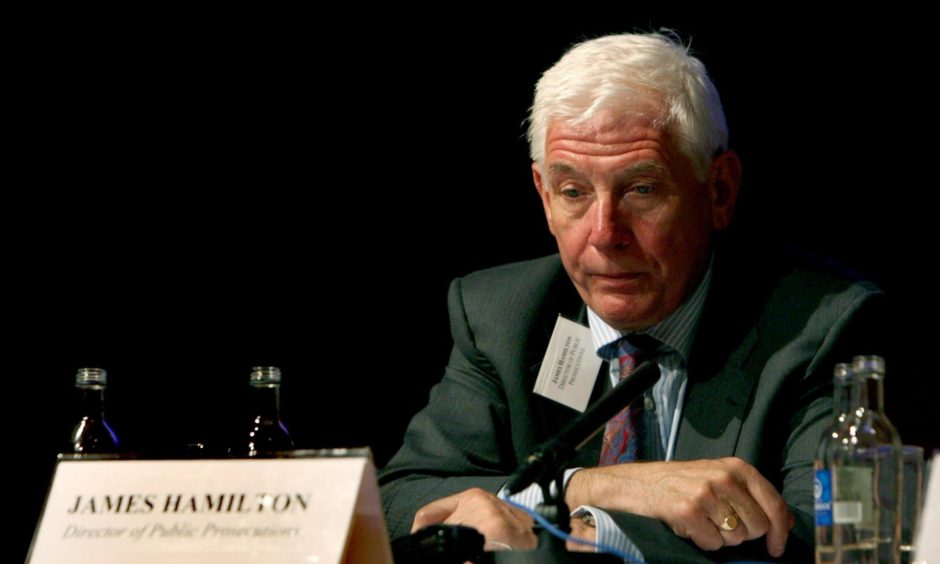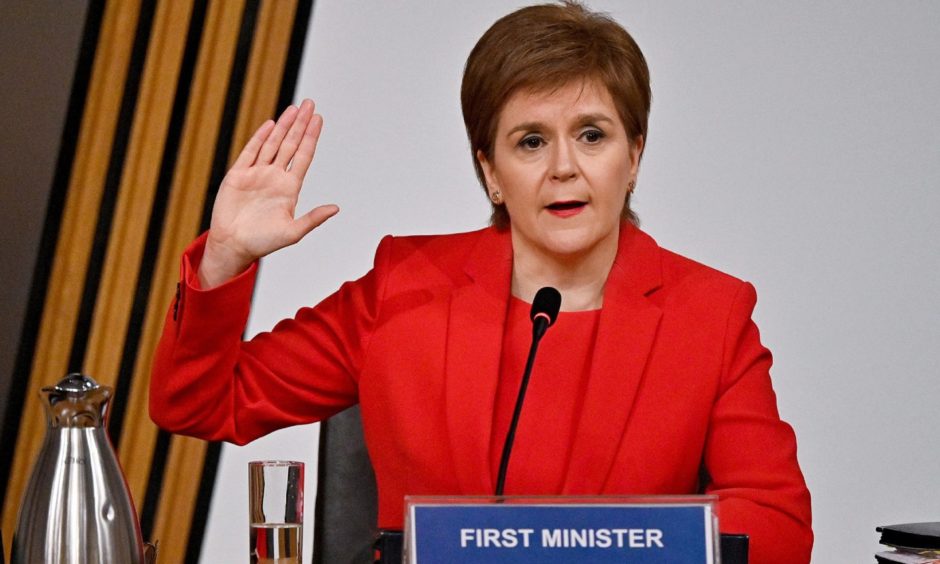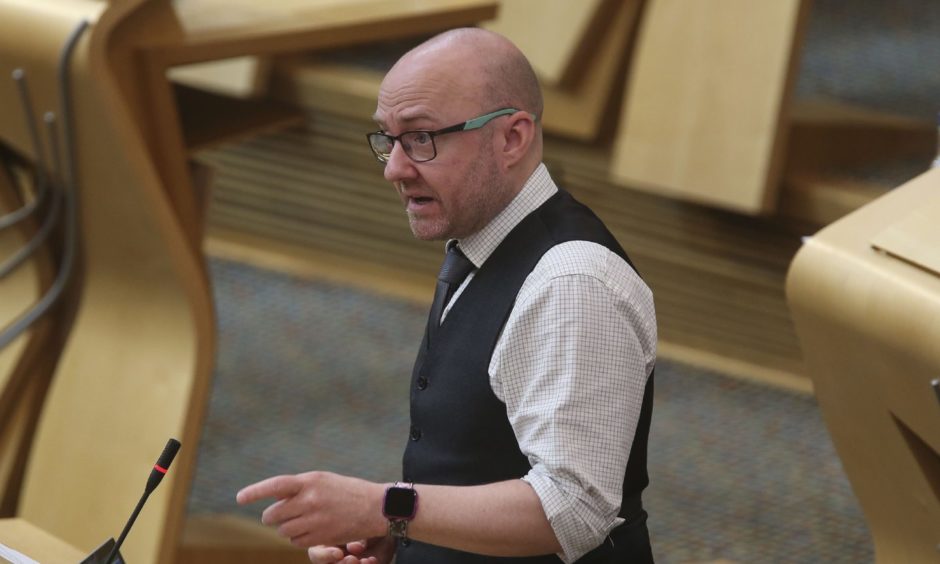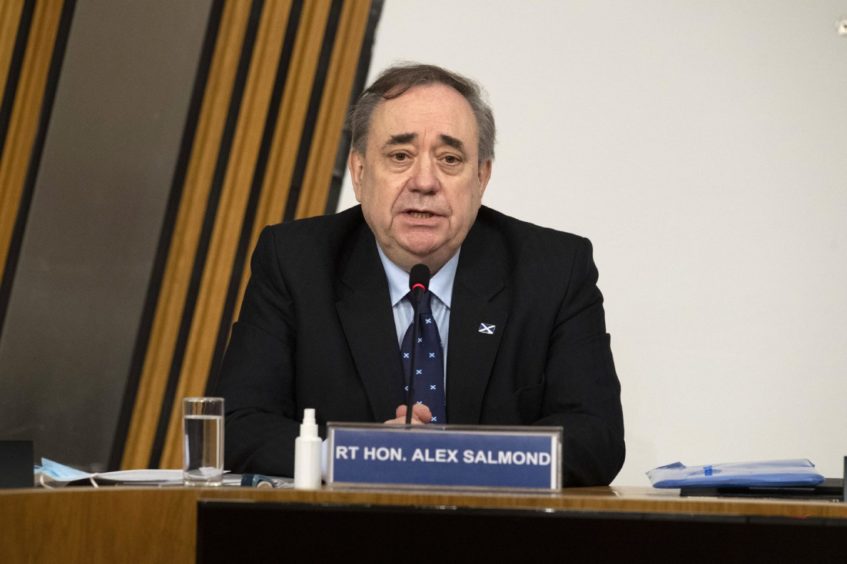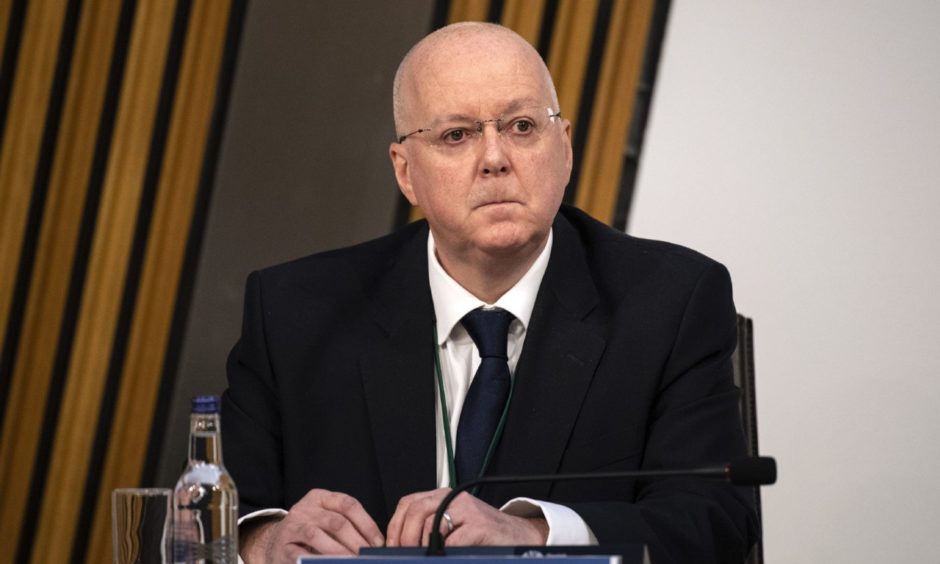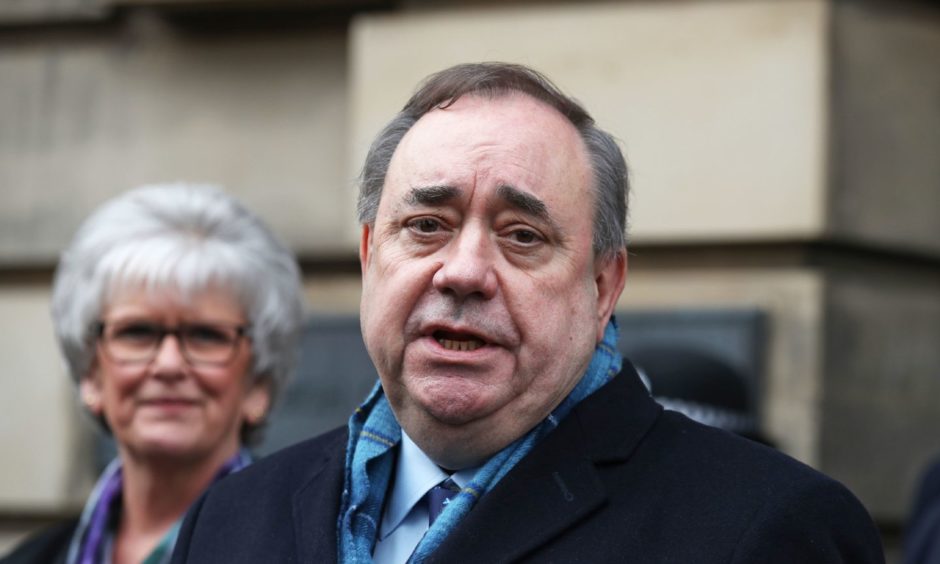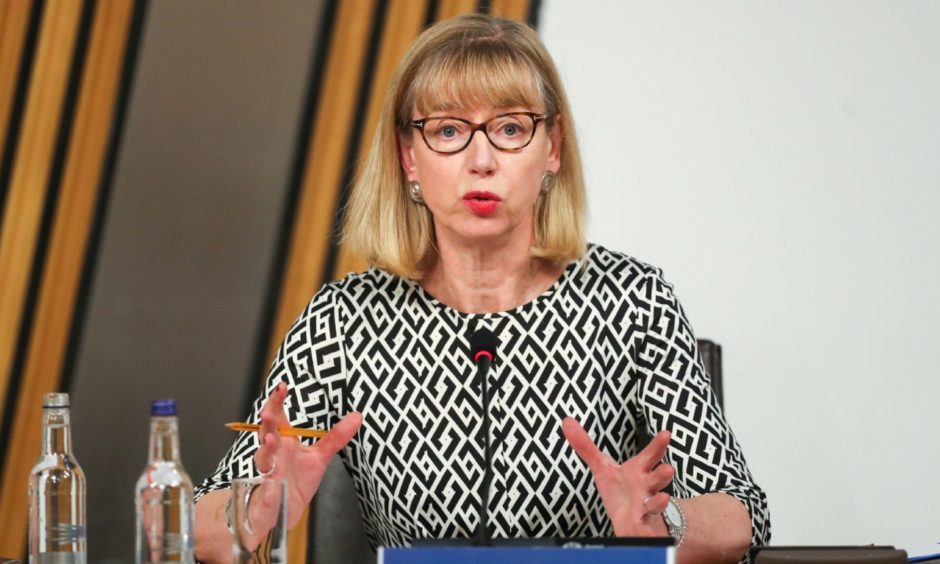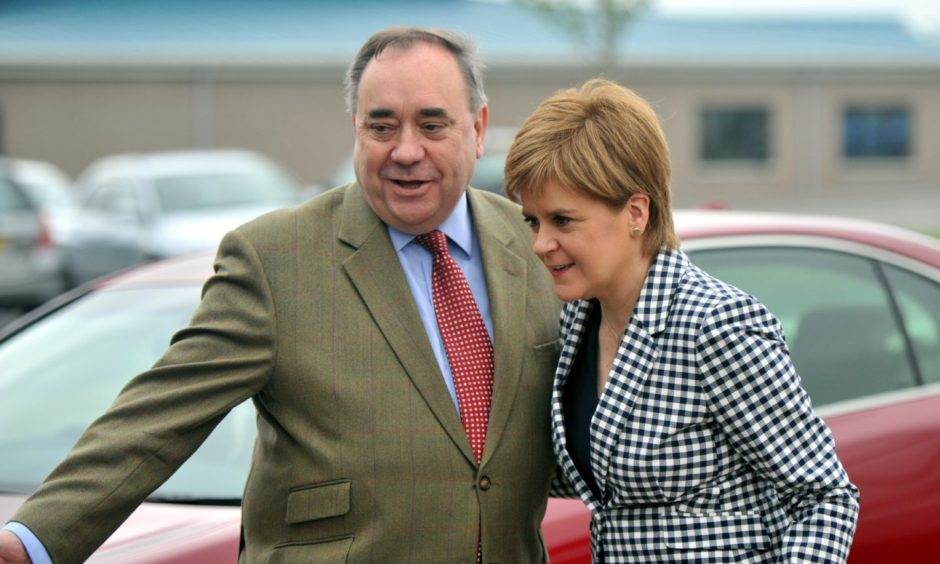With just days to go before the launch of the Scottish Parliament election campaign, all eyes are on Nicola Sturgeon and two blockbuster reports into her actions during the Alex Salmond affair.
The first, an independent investigation conducted by Ireland’s former chief prosecutor James Hamilton, has exonerated the first minister over questions regarding meetings she had with her predecessor in 2018.
This probe looked specifically at whether Ms Sturgeon broke the ministerial code of conduct by failing to report meetings she had with Mr Salmond when allegations about his actions towards a number of women were first emerging.
It is a watershed moment for the SNP leader, with many observers speculating the opposite result could have spelled the end for Ms Sturgeon’s political career.
The second big test will come early on Tuesday when the Holyrood committee investigating the Scottish Government’s handling of harassment complaints finally publishes its long-awaited report.
The Holyrood inquiry, essentially an investigation into an investigation, will “consider and report” on the actions of the first minister, special advisers and government officials in response to the allegations against Mr Salmond.
As part of the process, MSPs have looked at how the government’s anti-harassment policy was developed, the internal handling of the complaints, a judicial review of the process and a series of meetings between Mr Salmond and Ms Sturgeon.
It has not considered the criminal case against Mr Salmond or the court proceedings that saw him acquitted of all charges.
Leaked paragraphs of the report appear to show a 5-4 conclusion along party lines that Ms Sturgeon misled the committee, with Conservative, Labour, an Independent and Liberal Democrat committee members voting in favour.
A spokesperson for the first minister insisted Ms Sturgeon “told the truth to the committee” and condemned “partisan and selective briefing” of inquiry business.
A third hurdle, a vote of no confidence in Ms Sturgeon as first minister brought forward by the Scottish Conservatives, may already have been cleared following confirmation the Greens – who hold the balance of power at Holyrood – will not back it.
“Mr Hamilton has clearly concluded that the first minister did not breach the ministerial code, so we will not support the vote of no confidence being pushed by the Tories,” said Greens co-leader Patrick Harvie.
Scottish Conservatives leader Douglas Ross said recently that a vote of no confidence must take place to “give Parliament the opportunity to have its say on the first minister’s conduct”.
But Mr Harvie insisted that by lodging the vote before the publication of the Hamilton report, the Tories “have shown that they have no interest in establishing the truth”.
“This entire saga should have been about examining a process that let down women and ensuring that was never repeated,” he said. “In their ridiculous attempts to pursue a political scalp the Tories have completely ignored that fact.”
The Salmond controversy
In August 2018 it emerged the Scottish Government had investigated two allegations of sexual harassment against Alex Salmond while he was first minister under new rules that allowed retrospective investigations into former ministers.
The findings were passed to Police Scotland, which launched its own investigation. Mr Salmond denied the allegations, resigned from the SNP and launched legal action against the Scottish Government, accusing it of abuse of process.
He won the case and, in January 2019, the Court of Session ruled the inquiry was unlawful because the lead investigator had prior contact with the complainers.
The Scottish Government was forced to pay Mr Salmond £512,000 to cover his legal expenses and it later emerged this figure was so high because of procedural concerns about the government’s handling of his legal challenge.
Two weeks after winning the judicial review, Mr Salmond appeared at Edinburgh Sheriff Court on 13 counts, two of indecent assault, nine of sexual assault and two attempted rapes. He was cleared of all charges in March last year.
Salmond-Sturgeon meetings
A critical aspect of the case is when Nicola Sturgeon and her closest colleagues first became aware of the allegations against Mr Salmond, the conversations she had with him during this time and whether these were properly recorded.
She initially told MSPs she first heard of the allegations in a meeting with Mr Salmond at her home on April 2 2018, which had been arranged in her capacity as SNP leader.
However, Mr Salmond claims Ms Sturgeon arranged the meeting four days earlier, on March 29, with his former chief of staff, Geoff Aberdein, in her Holyrood office, and that it was clear the meeting would be to discuss the government’s misconduct probe.
The water was muddied further after Ms Sturgeon’s husband, Peter Murrell, stated under oath that he too believed it was about government business.
The nature of the meeting is important because no official was present and it was not logged in Ms Sturgeon’s ministerial diary. The first minister later said she “forgot” about the March 29 meeting.
What have we learned so far
Thousands of pages of testimony have been submitted and more than a dozen witnesses have been grilled by MSPs since the summer.
We have learned Nicola Sturgeon asked the permanent secretary to undertake a review of government policies and wrote to the presiding officer in October 2017 following claims that women had been sexually harassed at the Scottish Parliament.
In the wake of the Me Too movement, a controversial new harassment policy was drafted to cover both current and former ministers, and two women came forward who would later make complaints against Mr Salmond.
The creation of the policy has been an important focus of the committee and it later emerged the process was not supported by the UK Cabinet Office at the time.
The two women who went on to make a complaint against Mr Salmond had meetings with Ms Sturgeon’s principal private secretary, John Somers, in November 2017.
This fuelled claims that the harassment policy had been drawn up for use against Mr Salmond because, one day later, Mr Somers forwarded a letter from Ms Sturgeon to Leslie Evans, seeking confirmation that the new policy included consideration of complaints against former ministers dating from when they were in office.
Mr Somers has denied informing Ms Sturgeon or anyone other than his line manager about what was discussed in the meetings.
We also learned that the two women did not want to contact the police about their complaints and it was Ms Evans, the permanent secretary, who took the final decision to contact Police Scotland.
It has also been argued the disciplinary process was not followed in the case of Mark McDonald, the Aberdeen Donside MSP, who was forced to resign from his post as early years minister in November 2017 .
Some have claimed Mr McDonald may have been forced to resign to justify the need for a new harassment policy, with Ms Sturgeon first becoming aware of journalists investigating Mr Salmond on the same night Mr McDonald was told to quit.
Another intriguing dimension to the inquiry has been the emergence of text messages sent by Mr Murrell after Mr Salmond had appeared in court, facing criminal charges.
Mr Murrell sent the messages in January 2019, the same month a separate complaint was made about the former SNP leader to the Metropolitan Police, which the London force later dropped.
In the messages, Mr Murrell said it was a “good time to be pressurising” police and that the “more fronts he is having to firefight on the better for all complainers”.
Mr Murrell said he regretted the wording of the messages, saying they were “open to misinterpretation” and were a sign of how upset he was at the time. He said his intention was to direct those with questions to the police or Crown Office.
The extent of the breakdown in the relationship between Alex Salmond and his successor also became clear as it was revealed the pair have not spoken since 2018.
